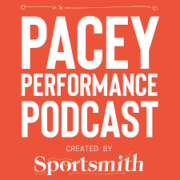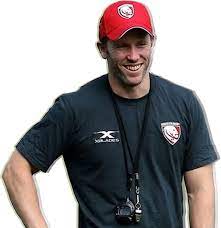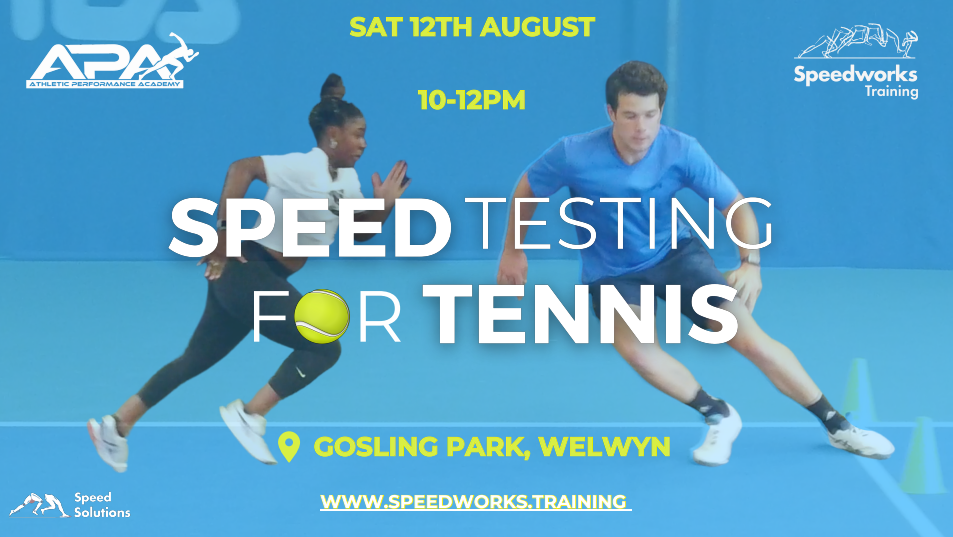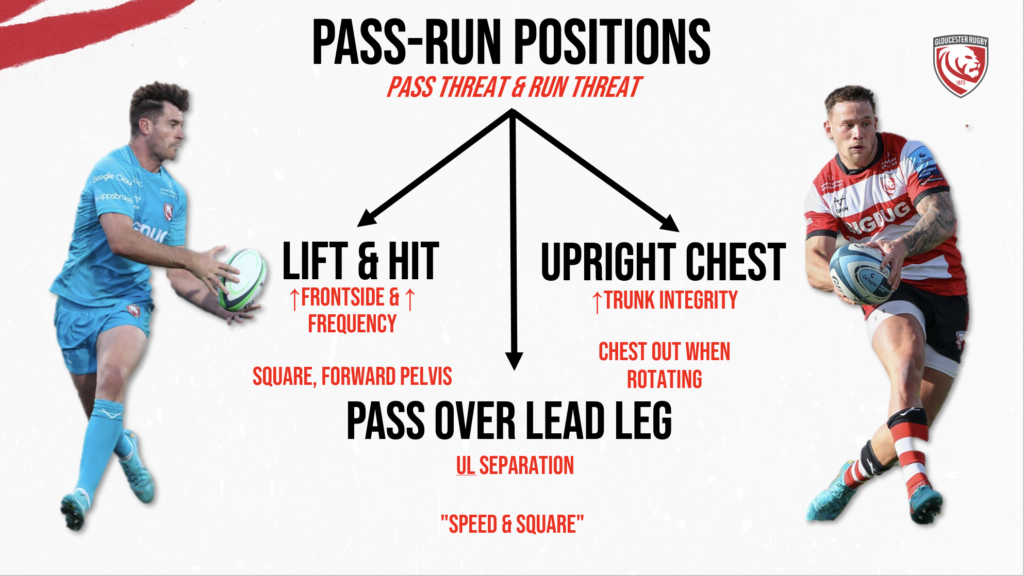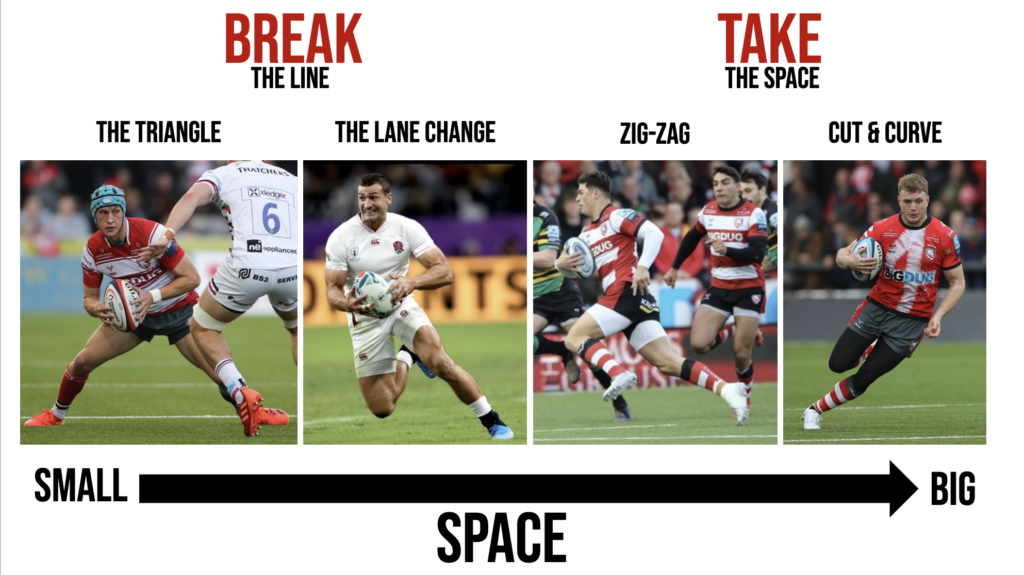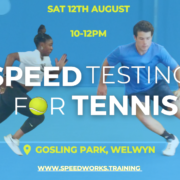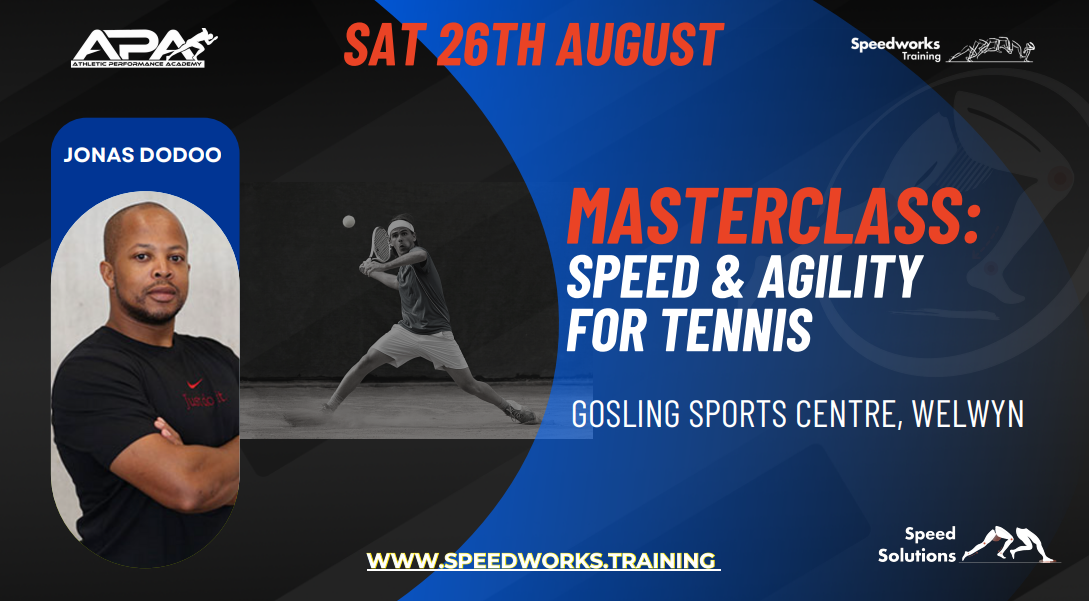Pacey Performance Podcast Review – Episode 457
Episode 457 – Dan Tobin & Dan Grange – Using collaboration and smart data collection to enhance the transfer of training
Dan Tobin & Dan Grange
Background
This week on the Pacey Performance Podcast is Dan Grange and Daniel Tobin, both of Gloucester Rugby. Discover their revolutionary approach to game speed training and the challenges they face in achieving optimal transfer from training to gameplay
🔉 Listen to the full episode here
Discussion topics:
”When it comes to training transfer it’s a little bit of a slightly murky area, based on the demands of the game and how complex it is to actually understand what transfers and what doesn’t, but what’s your process, where do you start in trying to understand what transfers from the gym and physical side into a technical and tactical model?”
”@Daniel Tobin: The step we have taken is trying to understand what the coaches want from the team, what’s the game model, what way are we trying to play, and what do we value in a game? We talk a lot about the KPIs of our game, in terms of what are the parts of our game that need to perform really well in order for us to be successful. Then we reverse engineer from there into how we underpin that with our physical programme, and ensuring that technical models are in place in all those KPIs so then the transfer comes from whatever are the relevant strength, power and speed qualities needed to develop from the physical end, that need to be channeled technically into the same technical models that improve game output. So what we do has to be completely linked to the rugby programme and there has to be massive integration; we need to know what they are trying to get from it and we have to ensure that we are linked specifically to that.
As an example, a lot of the article [on sportsmith] was on carry dominance (see full article below) 👇 and how we try to influence that area of the game. So we identified that as a KPI we wanted to improve. We looked at the physical qualities that we know to relate to those areas, things like power, reactive strength, acceleration, but that doesn’t tell the whole picture as it’s not simply that we get those qualities good and then we become a team that gets carry dominance because we found that this wasn’t the case. So, it’s then making sure there is a good technical model in place for the carry , and that’s coached well and developed well, and that we track that technically in the training environment and track the KPI in the game situation. You then react to that with a bit of trial and error to see where those figures are moving, and going in the right direction, and altering the programme if they’re not. So that’s probably it in a nutshell.”
From the gym to the pitch to the game: Maximising training transfer
Some key take aways:
- Training transfer is often discussed in S&C terms as the effects of resistance training or plyometric training on linear and change of direction speed. However, when it comes to team sport preparation, the aim is to improve on field performance. Within that context, linear and change of direction speed are general, not specific, qualities. They are qualities that may impact on field performance, but they are not the target task.
- Operating within the S&C silo and improving vertical jump scores or 10 metre acceleration time is not a badge of honour for training transfer
- Depending on a player’s profile and development stage, physical development can have a significant impact on competitive performance by impacting KPIs within the game. At some stage, the benefits of that physical development programme will diminish, and further improvements in the target task might come through improving the biomechanics of the task or the player’s decision making and execution of this skill in context.
- As an example one of the important KPIs for rugby union is carry dominance. The outcomes we on the S&C staff were looking for were an increased percentage of carry dominance by our players, and an improvement in our average dominance compared to the other teams in the league.
- “Capacity” is when we are influencing areas on the force-velocity curve that we know underpin or, in some way, relate to carrying ability. While it is important not to overplay the role of these qualities in training transfer, we must also not miss a trick here and underestimate their importance. The important question to ask is, what physical qualities are going to relate to, or underpin, the target KPI?
- Correlation studies, however, do not imply cause and effect. Improving vertical jump height, for example, does not guarantee enhanced carrying ability, despite the proven relationship. Apart from the obvious reason that the two exercises are biomechanically dissimilar, you must also consider the law of diminishing returns when predicting the transfer from capacity improvement to specific technical performance.
-
The other base of our pyramid is where we target “efficiency” of movement, particularly the efficiency of fundamentals like acceleration, deceleration, upright running and change of direction. Again, when considering the target task, in this case the ball carry, we need a technical model in place for this activity. Frans Bosch talks about attractors as being the stable part of the movements that we want to deepen and ingrain. Every movement will have attractor states that are stable and fluctuations in the movement that are unstable. Attractors are the generally applicable rules of the movement – things we always want to be present. Dan Pfaff refers to these attractors as landmarks and suggests there is a bandwidth with individual variation, but concurs that a technical model must exist as a reference point for evaluating movement.
-
When considering the ball carry, we examined all our forwards’ carries across a season and asked, what does it look like technically when we have a dominant carry? What are the differences when we have a neutral or negative carry? The key things we found for dominant carries was that players entered the tackle zone with a discernible drop in body height (“low”), avoided entering the tackle zone at an angle (“square”) and planted their foot close to the tackle point (“stepped in”).
- Once everyone around the table agrees to the technical model, the next step is establishing a shared understanding of what the coaching process will look like. We agreed to be clear on what principles we were going after in any given training session and what cues we would use to promote them. We improved the consistency of landmarks across individual players and the group, as judged by video footage. Players also trained in carry drills that were highly specific to our attack shape and in-game scenarios.
- Throughout the process of achieving training transfer, the challenge on the S&C coach varies substantially. We use a sliding scale of “own – collaborate – influence” when moving from general to special to specific exercises.
- We need to own the development of general capacities in the gym and get players to the point of diminishing returns. This is the pure and traditional technical requirement of the job. It is usually where the S&C team is left to their own devices. When it comes to putting a technical model together for a sporting task, we must be able to collaborate well with a coach or group of coaches. There is give and take involved and both sides need to be respectful in simplifying complex ideas from their own area of knowledge.
- Finally when it comes to the most specific forms of preparation (on field rugby preparation in this case), a good S&C coach must be able to influence intensity, workload, order of exercises and work:rest ratios; and offer informed opinions on the overall direction of the programme.
- “Transfer” is the apex of our programming model, when we are truly targeting the activity in question within the specific context. This is most likely to be an exercise taken by the rugby staff, but it is still a part of the integrated model.
Just before we carry on with the Pacey Performance Podcast Review, just a reminder, if you are an athlete and want to come along to our next Speed testing for Tennis day, you can book online below 👇
Now back to the podcast review…….
‘Where does your head go when we do talk about transfer (question to Grangey)?”
”@Grangey. I guess like Dan touched on a bit there, integration is key, and credit to Dan and our Head coach, as we have worked so hard the last couple of years to effectively create an understanding of what that means, and how we act upon that. All of the coaches are responsible for a certain area, but it’s all our area and responsibility to drive the game model. Dan touched on it a bit in his article that we have got to own our area to be able to get credibility to integrate. We all have different backgrounds and education and we can all bring different solutions to the problem. I’d love to say it’s a streamlined process, but it’s pretty messy at times.”
“Talking about integration, that merges into the technical/tactical side. So on going on this journey (which may have started many years ago with multiple coaches) what did you try to do to get yourself in a position where you could discuss technique and how it relates the physical side?”
”@Dan: I didn’t use to do it to be honest. The first port of call for any coach is that you must be outstanding in your own area, in order to get the respect and then step into a different room, to say that there are a few things that are going well in our area that I think you could look at, and we could improve the rugby programme. So as an example for that. we would have done a lot of work around using coaching reviews and coaching checklists last season to try and improve the delivery in whatever area of the programme we were then trying to improve. That then is something that transfers across domains because some of the content of what and how you coach might be different but there is a general structure there that is transferable across domains. So if something has gone well in one department you can then offer that with some integrity that you can share, and ask what they think and how it might work in the rugby domain or medical domain etc.”
”How much is it about you understanding the technical/tactical coaches and their job and understanding rugby versus expecting them to come in your domain and go that way?”
“@Dan: It does go two ways certainly, and over the years I’ve had S&C coaches who did dip into the rugby domain whereas I have never played the game, so you have to come at it from your own area with your own angle. From a biomechanical point of view, we look at a running mechanics a certain way and certain landmarks and positions we want the player to be in. If they hit those landmarks and positions consistently they will perform better, they are less likely to get injured. So any technical aspect of any game should have those landmarks and positions that we look for to be stable. How do we track it? How do we coach it? What is the level of performance across the group? If we are asking probing questions around what are the technical landmarks of the [insert rugby skill] we will develop some conversations hopefully, if your relationships are good and then from there you can start to influence that aspect of the programme.
From our end, if we think we have players who are quick enough, strong enough and powerful enough to be dominant in the tackle area, and then we start probing and influencing the technical execution of that area, then that’s how we connect and get transfer.
You can’t just sit in the gym and think we’ve nailed it here boys; everyone is jumping higher, running fast and squatting well. That’s not going to guarantee anything without those other elements, so it’s all context specific and it depends on your relationship with the coaches.”
@Grangey: ”Similar to what Dan says, the main side we have attacked it from is a technical model standpoint, of how we can apply basic, sound biomechanics to these sporting actions, so we can come up with technical models that we can hold players accountable to these, and coach towards these KPIs.
”Just moving to the Game Speed topic, how important is it to understand the game model before embarking on this game speed journey?”
“@Grangey: It’s probably your primary port of call. Whether you call it a game model or principles of play, whatever you call it, it’s pretty essential if you want to go through this process of being a highly integrated programme and narrow down and be really targeted in our programme, we’ve got to be able to collaborate and we’ve got to be able to understand what those principles are, what the outcomes are there. and what the coaches really want there.
Everything we do has got to have an impact on our game model, otherwise why would you do it? We can work on a scale from general to specific but at the end of the day, we’ve got to win games at the weekend.
There are certain physical qualities that underpin that but when we are looking at game speed from a highly specific end, we have got to try and influence things that will make our individuals or team better, whether that’s COD evasive qualities or underpin the system using coordinative qualities. These players are under so many constraints in a game that their decision making is literally homed in with so many different rules, or principles or guidelines as such that it becomes quite predictable that they’re either carrying on with the system or they are beating someone with footwork. So my though process around game speed is we are either working on their ability to break out of the system doing something brilliant as an individual with their evasive qualities, or we try to underpin them to effect them to make our system better.
The long winded answer to your question, is yes it is essential to understand the game model, to understand what we are working back from at the end of the day.”
”You mention a lot about separation in your article in your reference to robust running. Would you mind building that out for us around the qualities needed to execute that?”
The article was on Developing game speed in collision sports (see full article below) 👇
Developing game speed in collision sports
“@Grangey: It builds on our ability to maintain stable efficient running mechanics. We want to be able to maintain a nice stable pelvis, that yes will transition between anterior and posterior pelvic tilt, and efficient front side mechanics, which everyone is buzzing around (which is brilliant), but whilst being able to rotate our pelvis and extend through our thoracic and fend off from different positions and pass from different positions while maintaining a square, stable pelvis.
We challenge upper limit rotation while being able to maintain a square, stable pelvis by moving at different speeds, from general stuff in the gym (as prep drills) and we work very specifically on the field, we do different plate punch positions where we are holding plates out in front with upper limb rotation while being able to run square, whether that’s running over wickets or we challenge that with speed and we are punching out dynamically, banded at the waist. Then we piece it together into different passing variations; passing over wickets, racing while completing a pass. We layer it up by going into 2 versus 1, adding different perceptual demands and try to build that up into a representative practice that underpins one of our principles of play.
For the lower body evasion qualities, there are different layers. We can start by working on general qualities of change of direction and apply those principles and we do; different 45 degree cuts and 90 degree cuts and 180 degree turns. But when we look at evasive qualities that’s a different layer – how can we narrow and home in on two or three key ones and make them better (see image below 👇). Then the next layer is how are these players changing direction into contact, which links into Dan’s carry power principles, so that’s another layer, but we are still working on one or two key components within it.
Although we might have multiple layers and working on a scale of general to specific as such, we are maybe honing on one or two strategies. We have three key evasion strategies that we know that players generally believe one of those three strategies is their X factor, if that’s the style of player they are. Even if it’s not, they acknowledge it is a quality that they need to develop for their position within our system.”
Top 5 Take Away Points:
- Linear and change of direction speed are general, not specific, qualities
- To increase transfer we need game based KPIs and technical models for them that improve game output
- Own your area first. We have got to own our area to be able to get credibility to integrate.
- Bring your own area of expertise to the discussion to aid collaboration such as biomechanical principles – apply basic, sound biomechanics to these sporting actions
- Essentialism – Although we might have multiple layers and working on a scale of general to specific as such, we are maybe honing on one or two strategies
Want more info on the stuff we have spoken about?
You may also like from PPP:
Episode 444 Jermaine McCubbine
Episode 442 Damian, Mark & Ted
Episode 381 Alastair McBurnie & Tom Dos’Santos
Episode 380 Alastair McBurnie & Tom Dos’Santos
Episode 372 Jeremy Sheppard & Dana Agar Newman
Episode 217, 51 Derek Evely
Episode 207, 3 Mike Young
Episode 192 Sprint Masterclass
Episode 87 Dan Pfaff
Episode 55 Jonas Dodoo
Episode 15 Carl Valle
Hope you have found this article useful.
Remember:
- If you’re not subscribed yet, click here to get free email updates, so we can stay in touch.
- Share this post using the buttons on the top and bottom of the post. As one of this blog’s first readers, I’m not just hoping you’ll tell your friends about it. I’m counting on it.
- Leave a comment, telling me where you’re struggling and how I can help
Since you’re here…
…we have a small favor to ask. APA aim to bring you compelling content from the world of sports science and coaching. We are devoted to making athletes fitter, faster and stronger so they can excel in sport. Please take a moment to share the articles on social media, engage the authors with questions and comments below, and link to articles when appropriate if you have a blog or participate on forums of related topics. — APA TEAM

